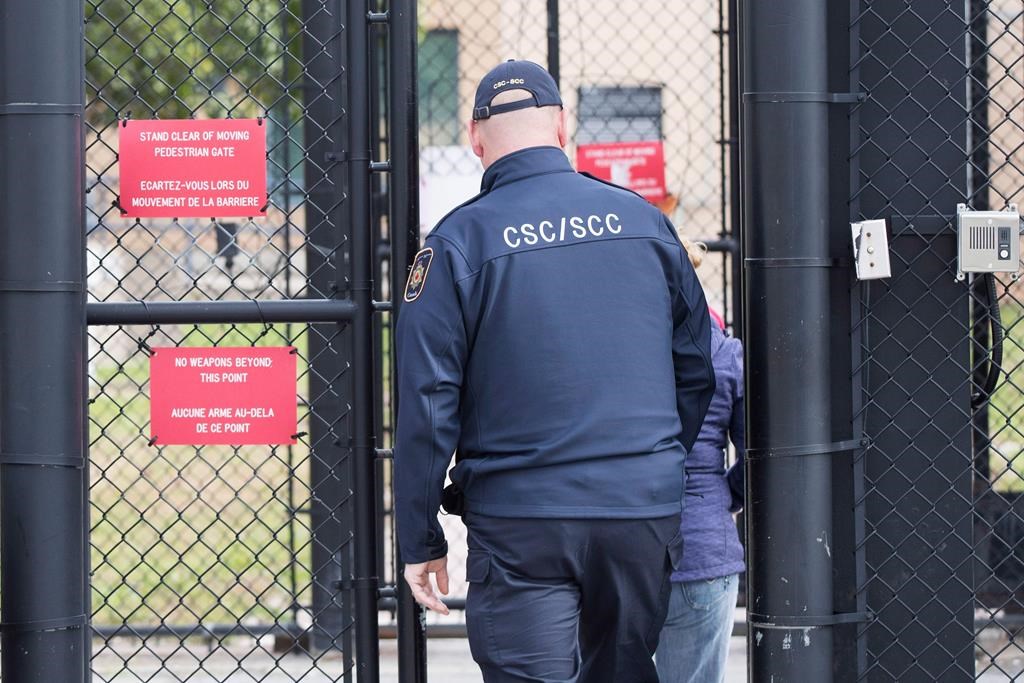Canadians want revenge on Paul Bernardo, but that’s not how prison works: ex-official

Posted June 7, 2023 7:25 am.
Last Updated June 7, 2023 3:45 pm.
One of the architects of the law that governs Canada’s prison system says it’s understandable people want revenge on convicted killer and serial rapist Paul Bernardo, but that’s not what the prison system is designed for.
Mary Campbell also says it is regrettable the Correctional Service of Canada has not been more transparent in how it handled the matter, despite the fact the law would allow it to be.
Campbell, a lawyer who retired from her role as director-general of the corrections and criminal justice directorate in the Public Safety Department in 2013, said that without question, Bernardo’s crimes were horrific.
But broadly speaking, the corrections system has a mandate to rehabilitate offenders.
Politicians from all parties and levels of government have decried Bernardo’s transfer from a maximum-security penitentiary to a medium-security prison in Quebec,saying the heinousness of his crimes means he is undeserving of the leniency offered in a less restrictive institution.
News of the transfer was confirmed publicly last Friday, as the lawyer for the families of two of his victims, Kristen French and Leslie Mahaffy, requested he be returned to maximum security.
A spokesperson in the office of Public Safety Minister Marco Mendicino says he first learned of the situation last Tuesday, three days earlier, and looked into what could be done.
The minister has stated publicly that his hands are tied because the correctional service operates independently, but he has panned the move as “shocking and inexplicable.”
Bernardo was convicted of the kidnapping, sexual assault and murder of both teenage girls in the early 1990s. He was also convicted of manslaughter in the death of Tammy Homolka, who died after being drugged and sexually assaulted. Tammy was the 15-year-old sister of Bernardo’s then-wife Karla Homolka.

Paul Bernardo’s transfer to a medium-security prison almost three decades after his conviction is not unusual, says a Quebec criminology professor who studies sexual murderers. THE CANADIAN PRESS/Lars Hagberg
Karla Homolka was released in 2005 after completing a 12-year sentence for her role in the crimes committed against French and Mahaffy.
Bernardo admitted to sexually assaulting 14 other women. He has been declared a dangerous offender and is serving a life sentence.
He has spent the past 30 years under maximum security, which Campbell said is a long time for any offender.
And while she understands why people want to see him kept there, she said the criteria for transferring an inmate to another penitentiary “is not based on revenge.”
“We, as a country, gave up torture quite a while ago,” she said in an interview Tuesday.
“And we’re pretty critical of other countries that engage in torture.”
RELATED: ‘Nothing but a scumbag’: Ontario Premier Doug Ford comments on Bernardo move
After the news broke, Ontario Premier Doug Ford said he thought Bernardo should be locked up for “23 hours a day,” while Conservative Leader Pierre Poilievre called on Prime Minister Justin Trudeau’s government to enact changes that would force those who are convicted of multiple murders to serve their entire sentence in maximum security.
The correctional service is reviewing the decision to transfer Bernardo. Under the Corrections and Conditional Release Act, inmates are given security classifications based on factors including escape risk, which inform where they serve their sentences.
In the case of Bernardo, who is now in his late 50s, the correctional service says a move to a medium-security prison poses no risk to public safety.
“Public hatred of a prisoner should not justify harsher confinement than warranted by the risk assessment,” said Catherine Latimer, executive director of the John Howard Society of Canada, an organization that advocates for criminal justice reforms.
“Politicians should not be suggesting that the notoriety of a prisoner overrides the obligation of the correctional authorities to respect the law.”
Jeff Hartman, a Toronto-based lawyer who represents prisoners alleging harm at the hands of the federal correctional service, says regardless of how dangerous they are, inmates “need to be incentivized to work towards rehabilitation and to be on good behaviour.”
He added that under law, prisons are mandated to try and rehabilitate each one – “including Paul Bernardo.”
The reason behind his transfer, however, remains a mystery. The federal correctional service says it is “restricted by law” in what it can divulge.
RELATED: Bernardo’s transfer to prison that treats sex offenders not unusual, professor says
Public Safety Minister Marco Mendicino has said Canadians are owed an explanation as to why Bernardo was transferred.
Tim Danson, the lawyer representing the French and Mahaffy families, said he was not given the information because of Bernardo’s privacy rights.
Campbell said the law spells out that the commissioner of the country’s prison system has the power to disclose to victims a summary of the reasons for the transfer of a particular offender, in cases where it is determined their interest outweighs any invasion of the offender’s privacy.
She said the commissioner can also choose to release information under the federal privacy law in cases where they determine the public’s right to know overrides an inmate’s privacy.
“When (the Correctional Service of Canada) says they can’t release details because of the law, that’s not entirely accurate,” she said. “There are exceptions.”
“It is unfortunate that CSC maybe hasn’t been a little bit more transparent, explaining things.”
She added that there are more than 20,000 other people serving a sentence in Canadian prisons and jails, and the rules have been designed to apply broadly.








